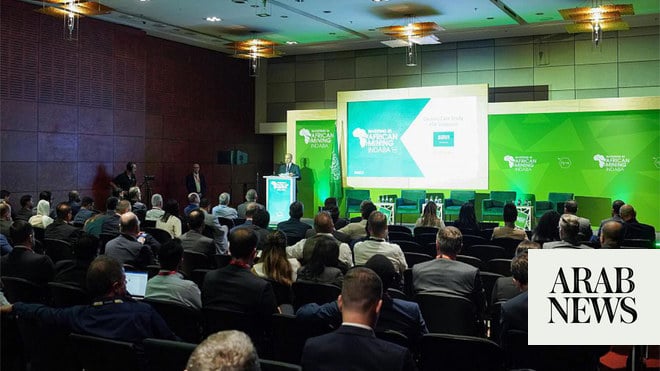
Interactive exhibition explores Saudi Arabia’s history and traditions
DHAHRAN: A new exhibition at the King Abdulaziz Center for World Culture (Ithra) in Dhahran explores traditions from various regions of Saudi Arabia that have helped to define the Kingdom’s unique cultural landscape.
“Being Saudi,” which will run through 2021, invites guests on an interactive and entertaining cultural journey over four ‘zones’ focusing on different aspects of the Kingdom’s heritage: Musicscape, Patterns, National Costume, and Poetry.
“We decided to make the exhibition in the form of an interactive gallery because we wanted to engage as closely as possible with people,” Latifa Al-Moghanam, curator of the exhibition, told Arab News. “We wanted to go beyond the traditional exhibition set up of objects in showcases and incorporate technology as a way to explore Saudi Arabia’s diverse heritage. Poetry, fashion, and music are the most important aspects of Saudi society and we want to share these aspects not just with Saudi nationals, but with the rest of the international community.” The show highlights the cultures and traditions from all regions of Saudi Arabia, she stressed.
Al-Moghanam described the Patterns section as one of her favorites. “It underlines a unique aspect of Saudi culture — each region has its own unique set of patterns — but it also references the environment and the diverse landscape in each region,” she explained. The pigments and materials used vary from region to region depending on the availability of resources. Diverse patterns can be found on the walls of traditional homes — especially those in Asir — as well as on various traditional garments. Visitors are able to create their own designs, which are later projected on the walls.
The high-tech framework of the show is rare in an exhibition of culture and heritage, particularly in the Gulf region. “Being Saudi” cleverly merges elements from Saudi Arabia’s rich past with the rapidly developing technology of the present. In many ways, the show also underlines the Kingdom’s rapid development into a digital nation.
For example, visitors carry a black circular disk marked with the words “Being Saudi” throughout the show, which collects information from each section that you visit. At the end of the experience, your disk will be filled with information about the exhibits.
As the show explains, Saudi Arabia was at the center of important ancient trade routes, meaning its history was enriched by diverse civilizations — and vice versa. From 3,000 BC, Arabian merchants were part of a large network that extended all the way to the Mediterranean, Egypt and South Asia. The Arabian trade route served as a vital link between the Far East and India and Byzantium and the Mediterranean. The Kingdom’s cultural traditions were thus influenced by outside sources, as well as early Arabian tribes.
Poetry is a prime example of this. Verse — both written and spoken — has long been an important aspect of Arab cultural life. In the early days, when the Bedouin tribes travelled extensively, poetry was primarily an oral tradition. Poets would relay tales of bravery, love, war, chivalry and historic events, and spoken-word poetry was one of the defining characteristics of Saudi Arabia’s cultural heritage.
Poetry was used both as entertainment and as a way to preserve history, traditions and social values. People would listen to the poets not just for the beauty of their verse, but also to learn. The Holy Qu’ran, of course, took the Arab love of poetry and language to new heights, and still serves as the primary influence for most Arab poetry today.
In the Poetry section of “Being Saudi,” guests can discover the works of some of the Kingdom’s most-revered poets, including Ghazi Al-Qusaybi, Jaasim Al-Suhayyih, Muhammad Al-Thubayti, Muhammad Jabr Al-Harbi, and Muhammad Ibrahim Ya’qoub.
Through their work these poets have tackled numerous social and national topics. Visitors can use the “poetry machine” to read lines from each writer’s work. Of note here is the work of contemporary poet Hayfa Al-Jabri. One of her most poignant poems is “The Corner,” which draws an analogy between the palm tree and the women of Arabia — an example of how the poet sees herself but also an exploration of female Saudis notion of self in comparison to women from outside the country. The poem is devised in free-style verse but with a semi-narrative form. Close to prose in places, it marks an emerging trend in Saudi poetry.
In the Fashion zone, visitors will learn about traditional costumes in the Kingdom. Dresses often revealed the social status of the wearer, and varied according to their hometown. The Eastern region, for example is marked by the Al-Hasa oasis, one of the largest in the world. Here, the common women’s dress is the Musarrah, worn to special events in the Eastern region and the Najd region.
Traditional dresses also include Dira’a and Abayas, in addition to head and face covers. Visitors will learn how they are made, their various embellishments, cuts and fabrics, and can select one to wear themselves via an interactive screen.
As Saudi Arabia moves forward with Vision 2030 and a range of other reforms, “Being Saudi” confirms the Kingdom’s unique heritage — a heritage that is ever more important to remember as the Kingdom accelerates into the future.








